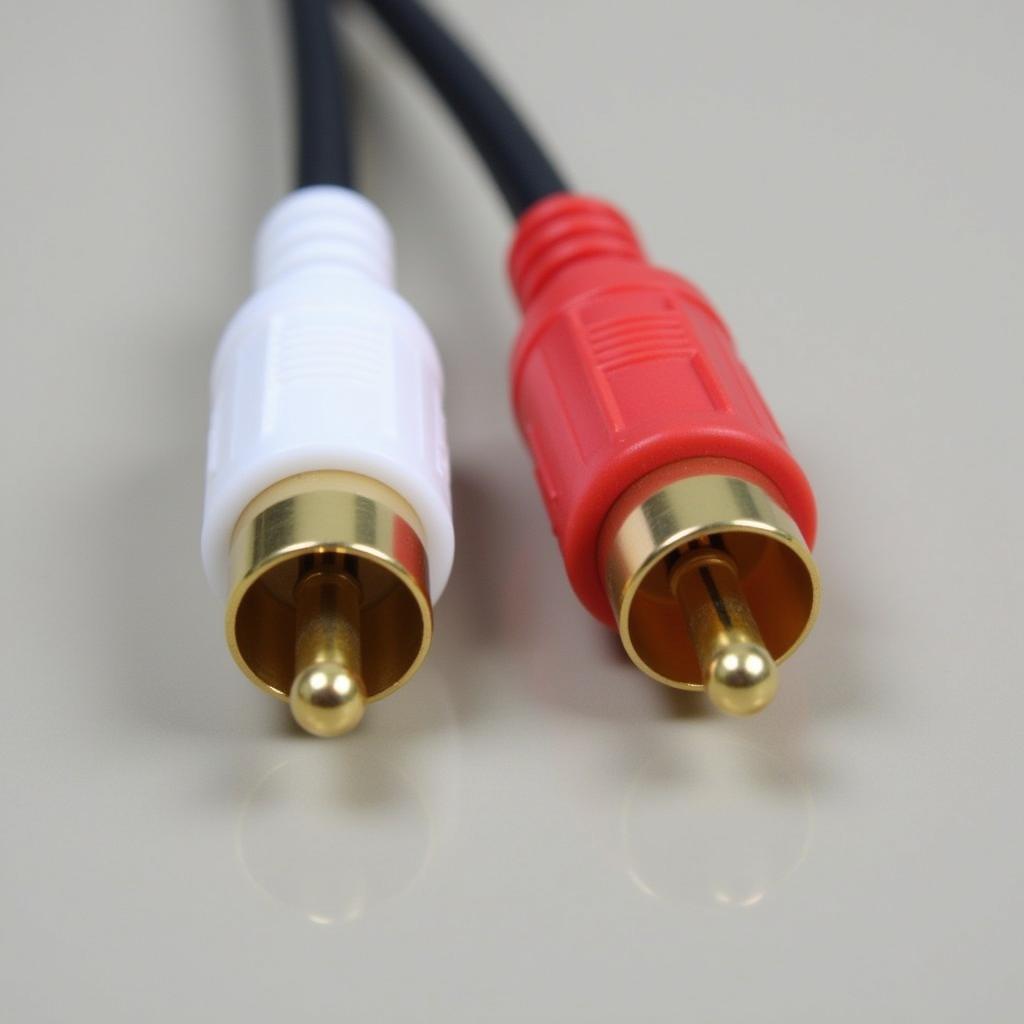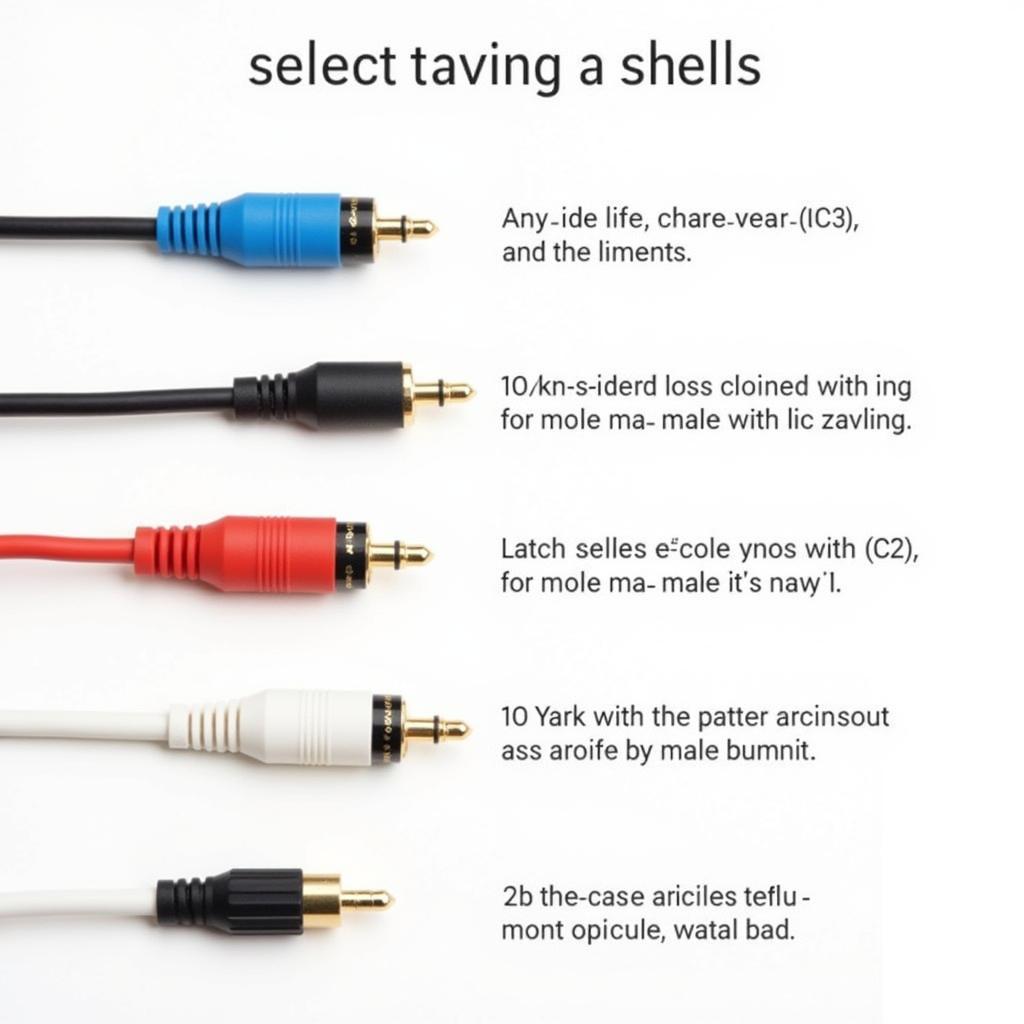RCA Male to Male: A Comprehensive Guide
October 16, 2024RCA male to male cables are a staple in the world of audio and video connections. Whether you’re an audiophile, a home theater enthusiast, or simply need to connect two devices, understanding these cables is essential. This guide delves into the intricacies of RCA male to male cables, providing you with the knowledge to make informed decisions for your setup.
Understanding RCA Male to Male Cables
 RCA Male to Male Cable Overview
RCA Male to Male Cable Overview
RCA, an acronym for Radio Corporation of America, represents a type of connector commonly used in audio and video applications. The “male” designation refers to the protruding pin found at the center of the connector, designed to fit snugly into the “female” receptacle of another device.
An RCA male to male cable, therefore, features two identical male connectors at either end, allowing for a direct connection between devices equipped with RCA jacks. These cables typically come in a stereo configuration, utilizing two individual cables bound together – one for the right audio channel and the other for the left, differentiated by red and white color coding respectively.
Applications of RCA Male to Male Cables
The versatility of RCA male to male cables makes them suitable for a wide range of applications, including:
-
Connecting CD players, DVD players, and turntables to stereo receivers or amplifiers: These cables transmit the audio signal from your source to the amplification and speaker system, bringing your music and movies to life.
-
Linking televisions to soundbars or external speakers: Enhancing your TV’s audio output is seamless with an RCA male to male cable, creating a more immersive and enjoyable experience.
-
Connecting gaming consoles to TVs or monitors: Enjoy classic gaming consoles or enhance your modern gaming experience with dedicated audio output.
-
Linking microphones to audio mixers or recorders: Ideal for musicians, podcasters, and content creators, these cables enable high-quality audio recording and mixing.
Choosing the Right RCA Male to Male Cable
 Factors to Consider for RCA Cables
Factors to Consider for RCA Cables
While seemingly straightforward, selecting the right RCA male to male cable involves considering a few key factors:
-
Cable Length: Determine the necessary length to comfortably connect your devices without excessive slack or tension.
-
Cable Quality: Opting for cables with high-quality materials, such as oxygen-free copper conductors and durable shielding, ensures optimal signal transmission and minimizes interference.
-
Connector Quality: Gold-plated connectors are preferred for their resistance to corrosion and superior conductivity, resulting in a cleaner and more reliable connection.
Troubleshooting Common Issues
Despite their simplicity, RCA male to male cables can occasionally encounter issues. Here are a few common problems and their solutions:
-
No Sound: Ensure the cables are securely connected to the correct input and output jacks on your devices. Check the volume levels on both the source and receiving devices.
-
Distorted Audio: This could indicate a faulty cable. Try a different RCA male to male cable to isolate the issue.
-
Humming or Buzzing: Interference from nearby electronic devices can cause unwanted noise. Try moving the cables away from potential sources of interference.
Conclusion
RCA male to male cables are indispensable for seamless audio and video connections in various setups. By understanding their functionality, applications, and potential issues, you can confidently choose and utilize these cables to maximize your audio-visual experience.
Remember, investing in high-quality RCA male to male cables ensures optimal signal transmission, longevity, and ultimately, a richer, more enjoyable audio-visual experience.